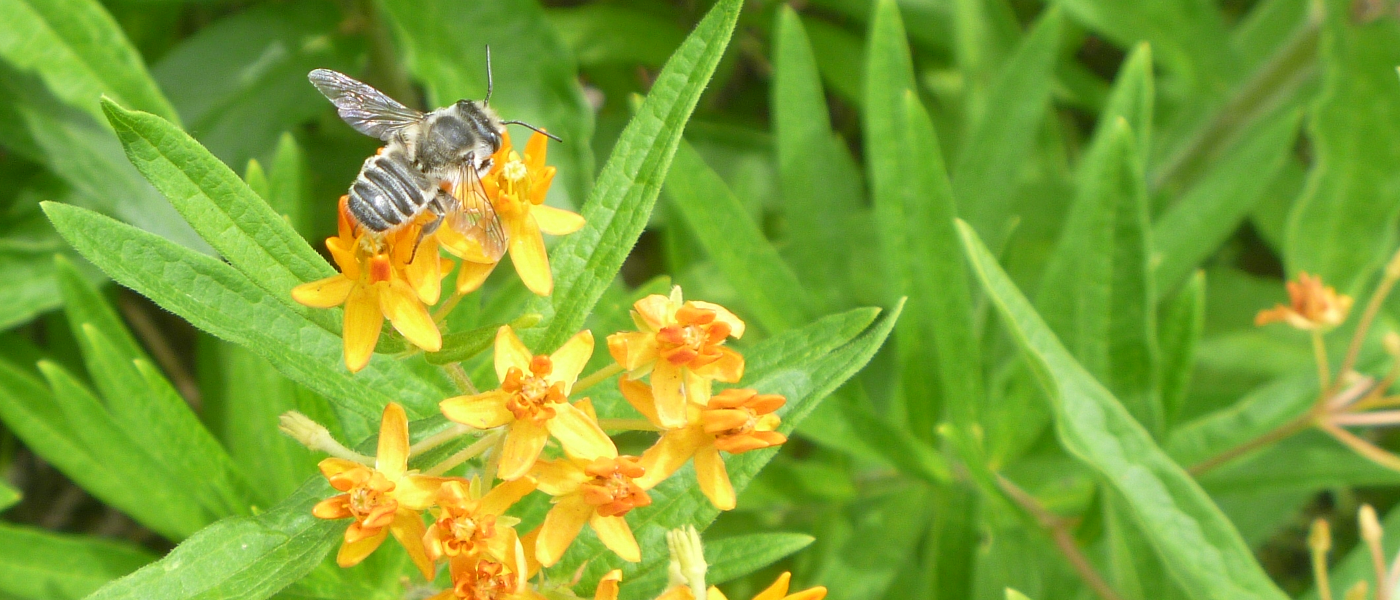Menu

Why Plant Native Plants?
Why Plant Native Plants
Why Plant Native Plants
There are lots of good reasons to plant native plants, some more altruistic than others. Are you an altruistic gardener, or simply a lazy one?
They grow well here.
Native plants are best suited to live in our climate. They evolved here. Winter, shminter. On May 27 we had snow in Toronto. The next day, all my native flowers were just as perfect as ever. I took the photo below, of native cransebill, Geranium maculatum, the day after snow. They really didn't care much about some late spring cold weather. That's their normal. Compared to many "alien imports" they fare very well with the variations in our weather.

They don't need as much water.
Actually, this is a complete fallacy. It is most important to choose a plant that is right for the conditions that you plant it in. So, if you put a swamp plant such as Lobelia on the top of a hill of sand, it's not going to be happy. Similarly, if you plant Rattlesnake Master in a wet depression, it's not going to be happy either. The good news is that lots of our natives are actually not at all picky, and adapt well to normal garden conditions.
They are more likely to multiply in your garden.
Now, arguably, this can cause it's own problem as you may end up with more of something than you need. But for me, one of the joys of using native plants in my garden is that they often self propagate by making seeds that germinate and pop up in unlikely places. We had our neighbour's Canada Anemone show up between our cedar and our house! It's very heart warming to me to know that these plants are just doing their own thing in my garden. Besides, free plants!

Health of Wild Places
Which, brings up another point. Even if native plants self propagate into a nearby wild place, it would be a good thing. When I walk through our ravines in Toronto, I usually find plants from other parts of the world growing wild there. In some cases these plants are out competing our local native plants, and taking over the growing space. What's the problem with that? Our local insects often can't eat them, so when a non-native plant displaces a native plant there is that much less support for our insects in what seems like a wild place. Allowing non-native plants to take over a wild place can have so many unforeseen consequences to our native insects. I'd rather not be a part of that. So, whenever possible I plant a native plant instead of an import.
Native plants will support our native pollinators.
In fact, all our native insects. People always think of providing flowers for pollinators, but the real picture is so much more complicated. Insects and plants evolved together and help each other out. Insects need food for all stages of their lives, and places to nest and shelter. For your average cavity nesting bee, that means pollen and nectar at the right time for their mating season to both feed the adults and to store for their infants, a nice dry cavity for their nest. Most of these precious bees spend the majority of their time in their nest as a larva, and only fly as an adult bee for a short few months in the summer. Having native plants in your garden is the number 1 best way to help them out. They evolved along with those plants, and so they give each other what they need to survive.
Attract Beneficial Insects
Another upside of having native plants in your garden is that it will help to balance your local insect population. You'll find that your garden starts to attract more and more different insects, from tiny wasps to lacewings and ladybugs. Spraying for pests eventually becomes a thing of the past. These predator insects will help to take care of the pesty ones, and you won't want to risk hurting them. You will start to see tiny wasps that attack aphids, flys that hide in plain sight by looking just like bumble bees, robber flies, dragon flies, and even assassin bugs. Some of those names are downright alarming. But, really, they aren't interested in us humans in the least. I admit that this world of insects is too huge for me to understand all the interactions, but each one I learn about fascinates me.

Just for Pure Beauty
And, some of them are drop dead gorgeous! Butterfly milkweed (Asclepias tuberosa) provides long lasting bright orange flowers. Spikes of Gayfeather (Liatris spicata) are amazing in late summer, and their foliage puts on a second show after cold weather arrives. Prairie smoke's (Geum triflorum) flowers, followed by the wispy seed heads can't be beat in the early summer.
In honour of Canada Day 2021, for the month of June, we are hosting a buy 3 or more and get 10% off for natives sale.
Shop Native Plants- Choosing a selection results in a full page refresh.
